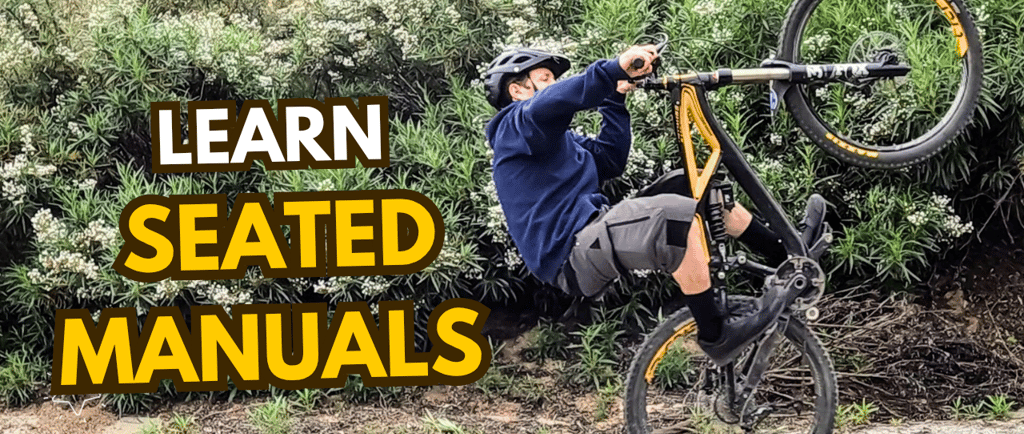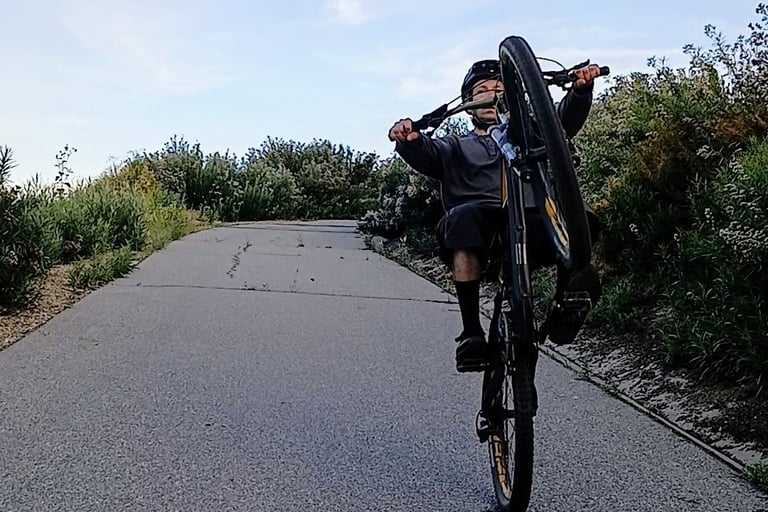How to Do a Seated Manual on a Mountain Bike (Yes, It’s Possible)
Most riders think manuals mean standing up—but what if I told you there's a way to hold a manual while staying seated? In this post, I break down the seated manual technique I’ve used for years, including body position, braking tips, and the right terrain to practice on. It’s not easy, but once you get it, it’s one of the smoothest, most controlled ways to float over rough trail or pump through flat sections.
SKILLS
6/22/20252 min read


How to Do a Seated Manual on a Mountain Bike
Intro Today I’m breaking down the seated manual—what it is, how I do it, and how you can learn it too. This is hands down my favorite technique for mellow descents and fire roads. It’s fun, smooth, and easy to hold once you get it. Let’s get into it.
What is a Seated Manual? A seated manual is when you lift the front wheel and ride your back wheel without pedaling, all while staying seated. It’s similar to a regular manual but with some key differences.
Seated vs Standing vs Wheelie A regular manual is done standing, shifting your hips back and forth to balance. A wheelie involves pedaling to keep the front wheel up. A seated manual is done sitting down, using body position and brake control to maintain balance. It’s more relaxed and smoother when done right.
Why I Prefer Seated Manuals For me, seated manuals are the most fun and the easiest to hold over long distances. They require less energy, especially on mellow downhills or fire roads. Once you find the balance point, you can just coast.
Where to Practice Start on smooth dirt trails or paved bike paths. Avoid loose, rocky areas. Fire roads are perfect. If it feels safer for you, you can even start practicing on flat ground.
Flat vs Downhill (How Steep?) You don’t need a downhill, but a slight descent helps. Steeper grades can make it harder to bail, so start with mellow slopes or flat ground.
Pedal Choice Use flat pedals when learning. If you run clips, at least unclip before practicing so you can safely jump off.
Seat Height Keep your seat at your normal pedaling height. Lowering the seat too much can make it harder to control.
Getting the Front End Up There are a few ways to lift the front wheel:
Preload the suspension slightly, then pull up.
Lean back and push through your legs.
Stay loose and let the bike come to you. If I can do it, you can too.
Jumping Off the Back (if Looping Out) Know when to bail. If you feel the front end coming too high, jump off the back. It’s easier to do this at low speeds. Be cautious trying this at higher speeds. If possible, let go of the bars.
Balance Point This is the key to a good seated manual. The balance point is that sweet spot where your front wheel floats effortlessly. You’re not pulling anymore, and you’re not falling forward or backward.
How to Know You’re in It:
The front end stays stable, not rising or dropping.
You feel almost weightless.
Your arms can relax a little.
You might even find yourself breathing mid-manual.
Rear Brake The rear brake is crucial. Feather it gently to bring the front end down without slamming it. It’s your safety net.
Leaning Back Stay centered, but don’t be afraid to lean back more than you think. Just keep that brake ready.
Wheelie or Manual First? Some riders learn the wheelie or regular manual first. You don’t have to. The seated manual is its own thing and can be easier for some people to learn first.
Tips and Tricks
Start slow, find the balance.
Keep your arms relaxed.
Brake = friend.
Don’t force it, let the bike float.
Now go give it a shot. If you fall, laugh it off. If you nail it, film it!


